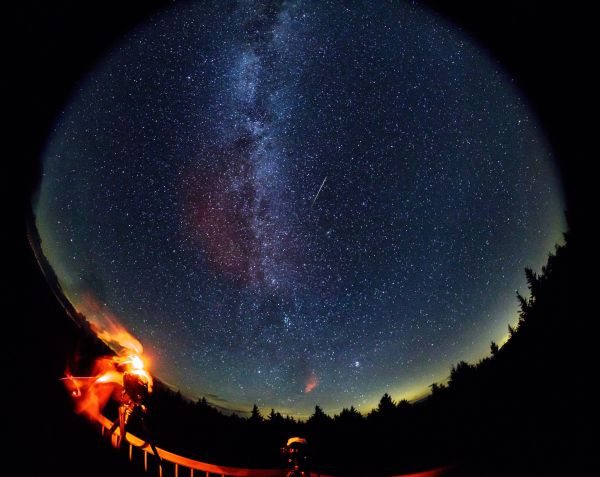When you purchase through data link on our site , we may earn an affiliate commission . Here ’s how it work .
When a dark-green bolide streaked above the Australian Outback in November , meteorite researchers went hunting for the space rock that caused this cosmic display .
This week , they annunciate winner after pulling ameteoriteout of the salty clay near a remote lake bed in the desert .

The fireball that streaked across the sky above the Australian desert on Nov. 27, 2015, as seen from the William Creek camera, one of the 32 remote skygazing cameras that form the Desert Fireball Network.
The 3.5 - lb . ( 1.6 kg ) rock in all probability work during the birth of thesolar system , more than 4.5 billion long time ago , the researchers say . [ Fallen Stars : A Gallery of Famous Meteorites ]
" It was an amazing team effort — we got there by the tegument of our teeth , " Phil Bland , a planetary geologist at Curtin University in Perth , Western Australia , said in a statement .
The space rock streaked across the sky on Nov. 27 , 2015 . It was spot not only by locals but also by five of the 32 remote skygazing photographic camera Bland and his fellow have installed across the Australian Outback as part of the new Desert Fireball internet .

A closer look at the meteorite discovered in the Australian outback.
Using the datum they captured , the researchers seek to pinpoint the locating where the meteorite probably fell . Next , during a fly-by of the area , they captured a low but promisingcraterlike impactin the dried - up , lower - than - sea - level Kati Thanda - Lake Eyre , in the state of South Australia .
After Christmas , the squad spent three days take a ground resume , trying to beat the impendent rainfall that would wash away shadow of an impact volcanic crater . When they at long last establish the modest impact dent in the lake bottom , Bland used his hand to dig into the mud and pull out a meteorite . It is the first one the squad has located using the Desert Fireball connection .
" It demo beyond doubt that this gargantuan machine that we ’ve built really whole kit and caboodle , " Bland said in the statement . " We ’ve got a lot more rocks on the ground . This retrieval will be the first of many — and every one of those meteorites will give us a unequalled windowpane into the geological formation of the solar system of rules . "

When afireballis enamour on camera as it deign to Earth , scientist can conduct what add up to a cosmic paternity test on the quad rock ; its orbit can be calculated and its asteroid origins can be determined .
More geochemical examination is postulate to study the newfound meteorite . For now , Bland and his colleagues say it is most likely achondrite meteorite , the most common and most primitive type of meteorite found in the solar organisation . It was originally about 175 lb . ( 80 kilo ) before it burn up in Earth ’s atmosphere . It stop burning about 11 miles ( 18 kilometers ) above the surface of the satellite and fell steeply to the background , the researchers say .
Perhaps to squelch the incinerate dubiousness of cyberspace commenters , the squad provided more item about the discoveryon their blogtoday ( Jan. 8) . They say that the rock " smell a bit like salty mud ! " and they explain why no one is wearing boxing glove in theirvideo footageof the discovery . " This rock is as Earth - pollute as you could get , having rested for more than a month in wooden-headed mud . treatment ? Not an issue , " one of the researchers said .
















